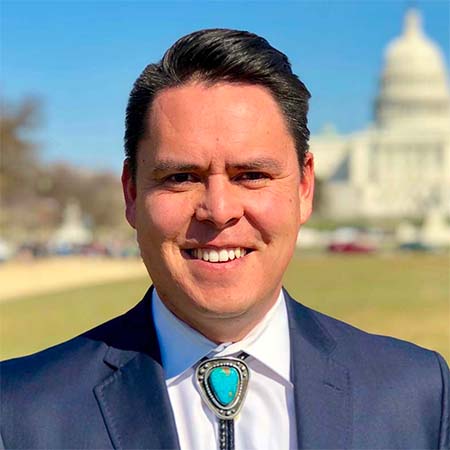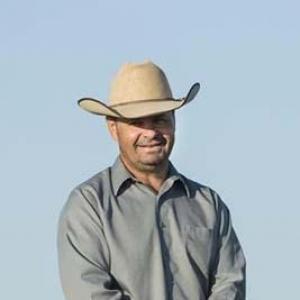
- Details
- By Chez Oxendine
- Finance
The Native CDFI Network has announced a partnership with the Intertribal Agriculture Council to help its member community development financial institutions more effectively provide capital to Native producers and suppliers.
The new partnership provides underwriting assistance to Native CDFIs that want to begin providing agricultural loans. The Native CDFI Network includes 70 member organizations spanning 27 states, all of which provide access to capital and credit building resources for Native communities.
 Jackson Brossy. Courtesy photo.“A small percentage [of Native CDFI Network members] do agriculture loans, but we’ve found a lot of our members want to do more agriculture loans, and want to learn how to do them well and how to do them right,” Executive Director Jackson Brossy told Tribal Business News.
Jackson Brossy. Courtesy photo.“A small percentage [of Native CDFI Network members] do agriculture loans, but we’ve found a lot of our members want to do more agriculture loans, and want to learn how to do them well and how to do them right,” Executive Director Jackson Brossy told Tribal Business News.
The resources offered by the Intertribal Agriculture Council proved to be the solution, Brossy said, adding that a shared network of expertise on what ag producers and industry supporters need will help the Native CDFIs get a better idea of how to service them.
CDFIs are private lending institutions that often service economically disadvantaged communities. They are of particular use to Native communities, whose historically limited access to credit has raised significant barriers to economic development and entrepreneurship.
The partnership kicks into gear in 2021, when Native CDFI Network members will begin receiving technical assistance with agricultural loans from the Intertribal Agriculture Council.
“We reached out to someone who is able to do the background work and the underwriting, look at a business or an ag producer, and look at whatever business or micro business that person has and determine if they’re in a position to repay a loan — and if they’re not, how do they get there,” Brossy said. “The IAC have a really good bench of folks who are agriculture credit specialists, so we thought that was a natural fit for our members.”
 Zach Ducheneaux. Courtesy photo.Intertribal Agriculture Council Executive Director Zach Ducheneaux believes the partnership could help improve the poor circumstances many Native producers face.
Zach Ducheneaux. Courtesy photo.Intertribal Agriculture Council Executive Director Zach Ducheneaux believes the partnership could help improve the poor circumstances many Native producers face.
To that end, U.S. farmers and ranchers are 57 years old on average and face mounting farm debt, which has increased by 4 percent annually, according to data cited by the Intertribal Agriculture Council. The council also noted that farm suicides have reached an all-time high.
The Intertribal Agriculture Council wants to work with the Native CDFI Network members to set up Native producers to be successful in agriculture and “break the debt cycle” that plagues many ag industry business, according to Ducheneaux.
Intertribal Agriculture Council will share its outlook on alternative financing with Native CDFI Network members, and detail methods used by Eagle Butte, S.D.-based Akiptan, the council’s in-house CDFI.
Traditional banks will often issue amortized loans collected on an abbreviated schedules that do not align with the lifetime of assets purchased in the agriculture sector, Duchenaux said. This can lead to a debt cycle of finishing out a loan by restructuring it and borrowing more.
“If you take a $100,000 loan out at a normal bank to buy cattle or machinery, one of the bank’s major motivations is how quick can we recapture our money, so you’ll get four or five years to give that back,” Ducheneaux said. “The best interest rate we’ve seen is 6 percent for that type of lending, and that translates into a $23,000 a year amortized payment. You’re paying 6 percent on $100,000, but you have to give $17,000 back to the bank. It’s a very asset-focused approach and tied to an artificial useful life for an asset.”
Akiptan instead takes that same $100,000 and places it with a producer as an “equity investment,” under which the Native CDFI collects a 10 percent annual return on investment, leaving the borrower with $13,000 more a year in Ducheneaux’s example.
“Our long term goal is just to have that capital perpetually deployed with that producer, generating a ROI every year,” Ducheneaux said. “What that provides for Akiptan is a marketable return that we can turn around to the philanthropic and investor community and say, ‘We’ve got a good deal. We can offer you an equity premium if you get in here for 10 or 15 years that nobody on Wall Street can offer you.’”
By bringing alternative financing methods to more organizations, the Intertribal Agriculture Council hopes to help build sustainable pools of capital the Native CDFIs can grow incrementally, much like Akiptan has achieved.
The partnership will ultimately benefit producers as well, giving them access to credit based on relationships and community need rather than strictly financial equations, Ducheneaux said.
“CDFIs are by their very culture more flexible and understanding of their customers, so it really goes back to the old-style relational-based lending. They’re more interested in the story than just the numbers,” Ducheneaux said. “More and more Native CDFIs are starting to look at agriculture as a way to diversify their portfolios.”
With any luck, the increase in available credit ought to spur more activity in the Native ag sector, Brossy said.
“In the long term, what we hope this means is that there will be more credit for businesses that are in agriculture,” Brossy said. “We think this should result in Native CDFIs being able to provide those loans. We hope this will result in more Native agriculture, more Native farmers, more Native ranchers, more people supporting that industry.”
